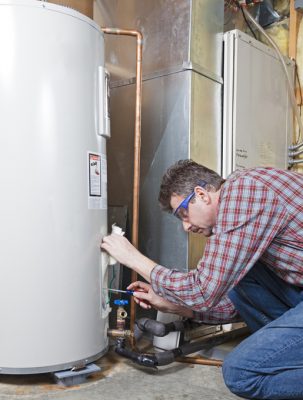How to Maintain Your Home's Hot Water System Functioning Well
How to Maintain Your Home's Hot Water System Functioning Well
Blog Article
Are you currently interested in help and advice around Tips For Maintaining Your Hot Water Heater?

Warm water is vital for daily comfort, whether it's for a refreshing shower or cleaning recipes. To guarantee your warm water system runs effectively and lasts much longer, routine upkeep is vital. This post provides practical ideas and understandings on how to preserve your home's warm water system to prevent interruptions and pricey fixings.
Introduction
Preserving your home's warm water system might seem challenging, yet with a few simple steps, you can ensure it operates efficiently for many years to find. This guide covers everything from recognizing your warm water system to DIY maintenance ideas and knowing when to call in specialist assistance.
Importance of Keeping Your Warm Water System
Regular upkeep not only expands the life expectancy of your warm water system but additionally guarantees it operates successfully. Neglecting maintenance can bring about decreased performance, greater energy expenses, and even premature failing of the system.
Indications Your Hot Water System Requirements Upkeep
Recognizing when your warm water system needs attention can prevent major problems. Watch out for indications such as inconsistent water temperature, unusual noises from the heater, or rusty water.
Purging the Hot Water Heater
Purging your water heater removes debris accumulation, improving performance and extending its life.
Monitoring and Replacing Anode Rods
Anode rods stop corrosion inside the storage tank. Evaluating and replacing them when broken is essential.
Facility Issues Calling For Specialist Assistance
Instances include significant leakages, electrical troubles, or if your water heater is constantly underperforming.
Routine Expert Upkeep Conveniences
Professional maintenance can include complete inspections, tune-ups, and guaranteeing conformity with safety and security requirements.
Evaluating and Adjusting Temperature Settings
Changing the temperature level setups makes certain optimum performance and safety.
DIY Tips for Maintenance
You can do a number of maintenance tasks yourself to keep your hot water system in leading condition.
Checking for Leakages
Regularly check pipelines and connections for leaks, as these can lead to water damages and greater expenses.
Recognizing Your Warm Water System
Before diving into upkeep jobs, it's practical to comprehend the fundamental elements of your hot water system. Generally, this includes the hot water heater itself, pipelines, anode rods, and temperature controls.
Regular Monthly Maintenance Tasks
Normal month-to-month checks can help capture minor issues prior to they intensify.
Examining Stress Relief Valves
Testing the stress safety valve ensures it operates properly and avoids excessive stress buildup.
Shielding Pipes
Protecting hot water pipes reduces warmth loss and can conserve energy.
When to Call a Professional
While DIY upkeep is beneficial, some concerns need expert knowledge.
Conclusion
Normal maintenance of your home's hot water system is crucial for performance, durability, and cost savings. By adhering to these ideas and knowing when to look for expert assistance, you can ensure a reliable supply of warm water without unforeseen disruptions.
How to Maintain an Instant Hot Water Heater
Before tinkering with your hot water heater, make sure that it’s not powered on. You also have to turn off the main circuit breaker and shut off the main gas line to prevent accidents. Also turn off the water valves connected to your unit to prevent water from flowing into and out of the appliance. 2. When you’re done, you have to detach the purge valves’ caps. These look like the letter “T†and are situated on either side of the water valves. Doing so will release any pressure that has accumulated inside the valves while at the same time avoid hot water from shooting out and burning your skin. 3. When the purge valves’ caps are removed, you have to connect your hosing lines to the valves. Your unit should have come with three hoses but if it didn’t, you can purchase these things from any hardware or home repair shops. You can also get them from retail stores that sell water heating systems. Read the user’s manual and follow it to complete this task properly. When the hosing lines are connected, open the purge port’s valves. 4. You should never use harsh chemical cleaners or solutions when cleaning your unit. Make use of white vinegar instead. It should be undiluted and you’ll probably use about 2 gallons. 5. Now flush your water heater. This task should probably take about 40 minutes. We can’t give you specific directions for this because the procedure is carried out depending on the type, model and brand of your heater. With that being said, refer to the user’s manual. 6. When you’re done draining the unit, you have to turn off the purge port valves again. Remove the hosing lines that you earlier installed on each of the water valves. Put the valve caps (purge port) back in their respective places and be very careful so as not to damage the rubber discs that are found inside these caps. 7. Now that everything’s back in place, check your user’s manual again to find out how to reactivate your water heating system. 8. Once it is working, turn one of your hot water faucets on just to let air pass through the heater’s water supply pipes. Leave the tap on until water flows smoothly out of it. https://www.orrplumbing.com/blog/2014/september/how-to-maintain-an-instant-hot-water-heater/

Do you enjoy reading about What Kind of Maintenance Do Water Heaters Need?? Try to leave a short review further down. We will be happy to see your opinion about this content. In hopes that you come back again before long. Those who enjoyed our blog posting plz be sure to share it. Kudos for your time. Come back soon.
Free Estimates Report this page